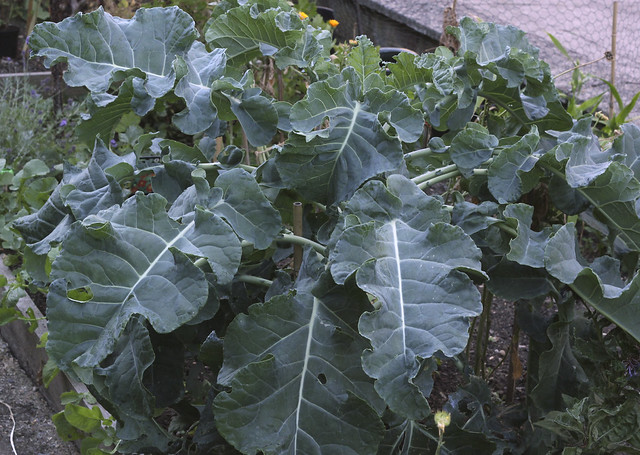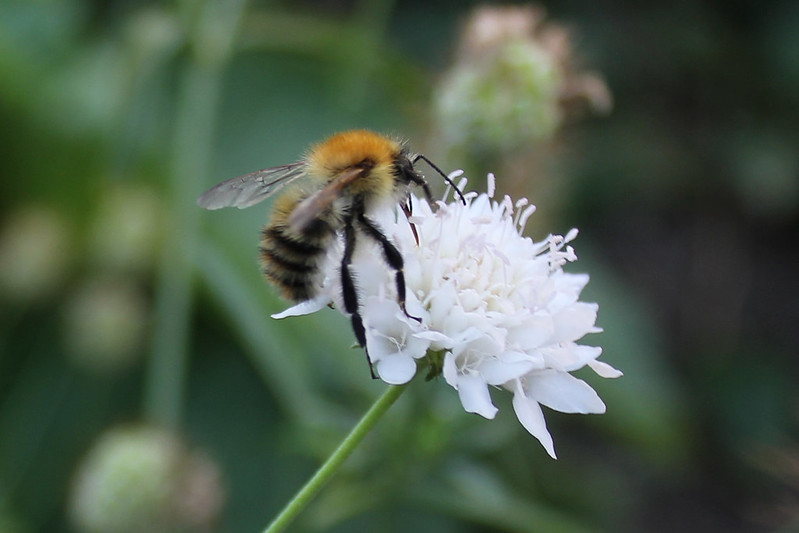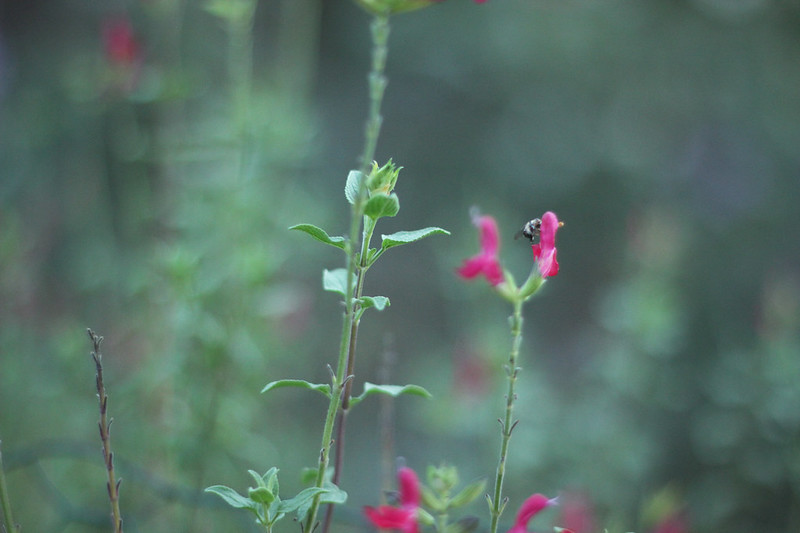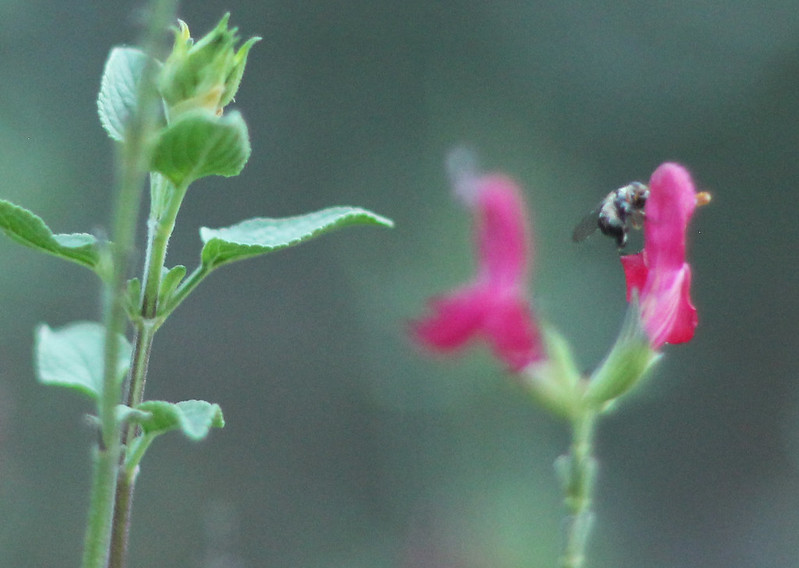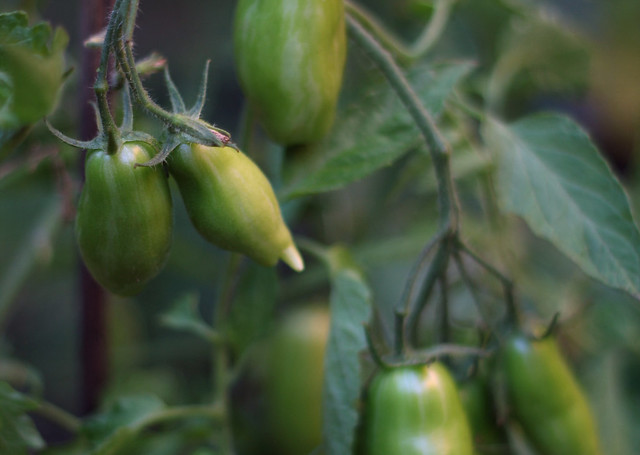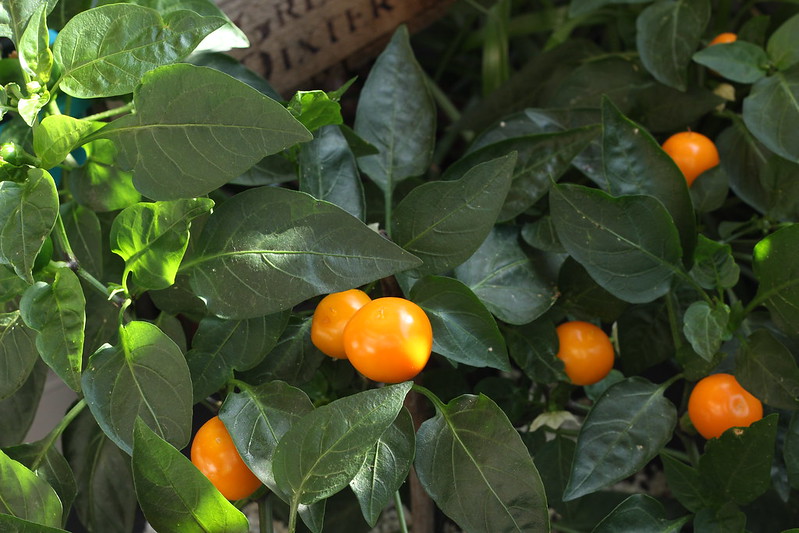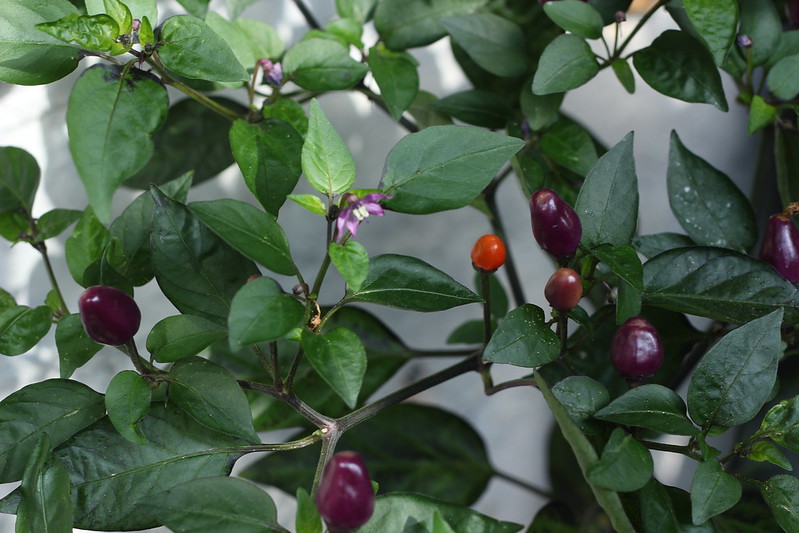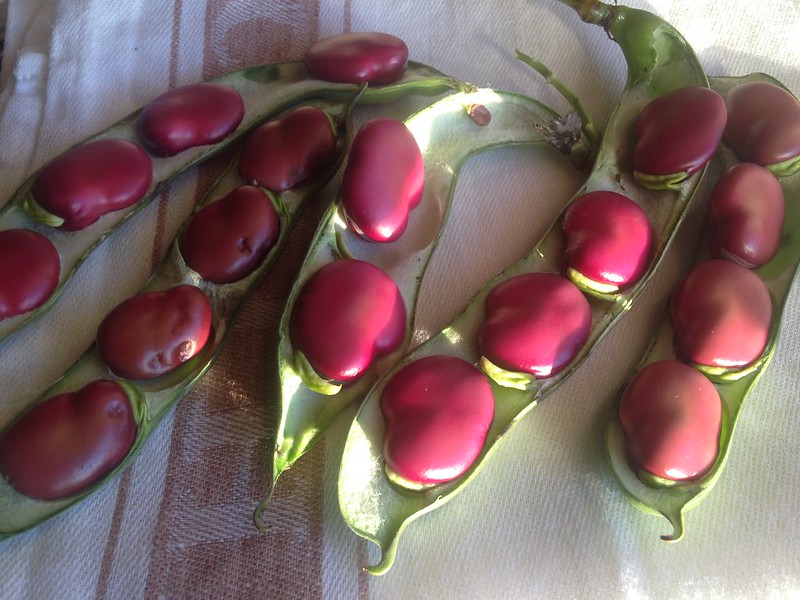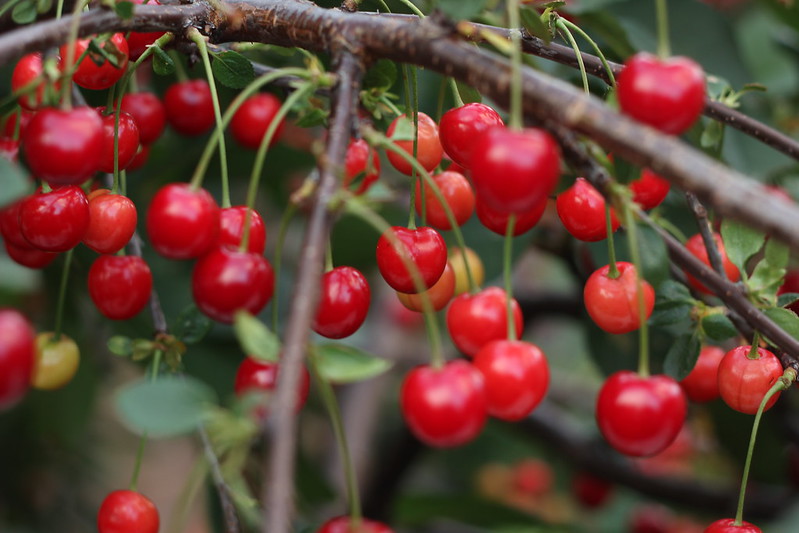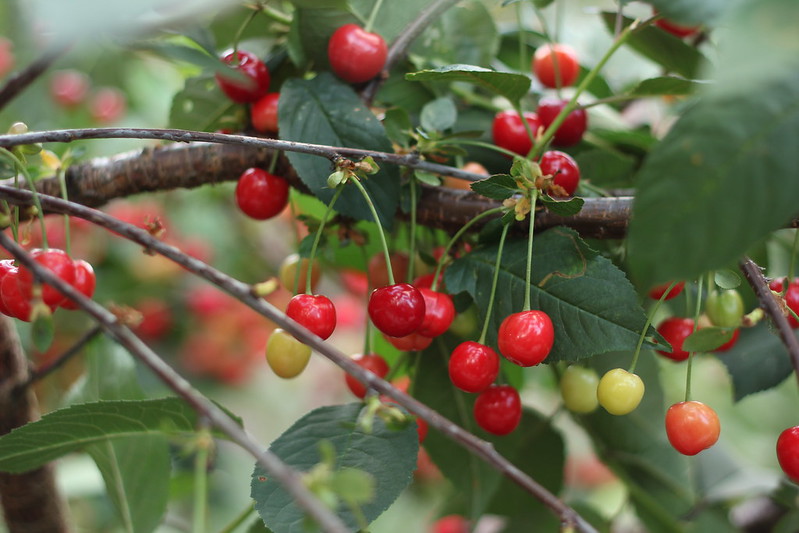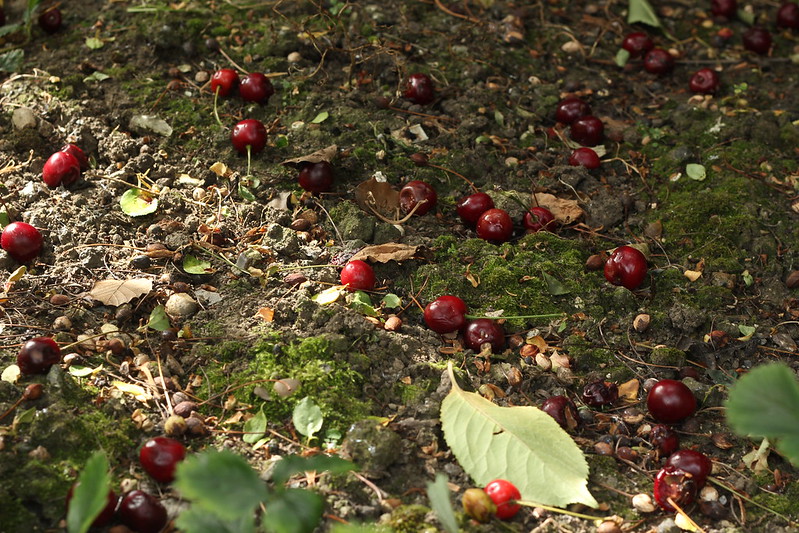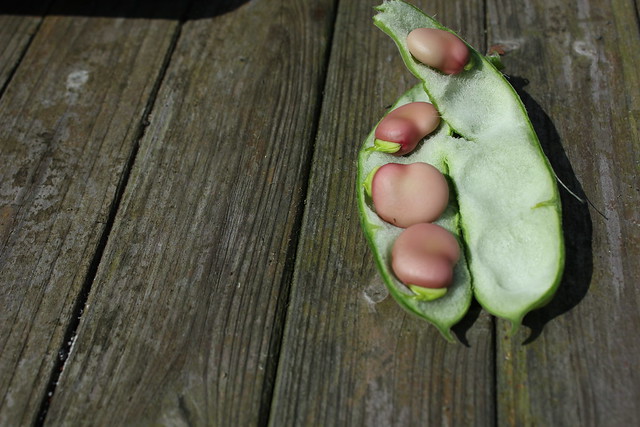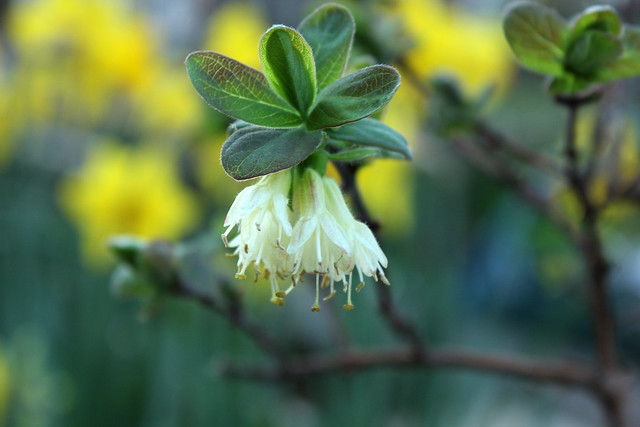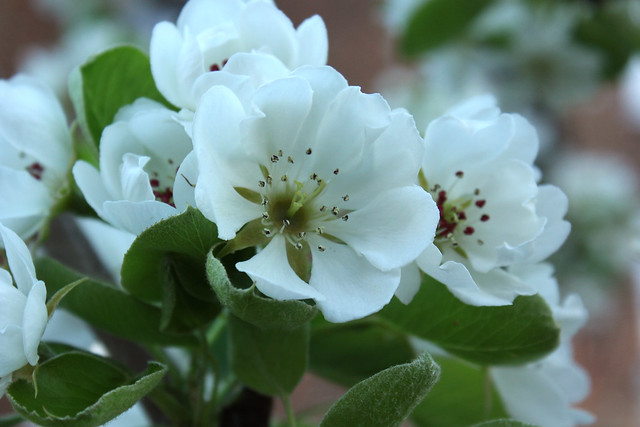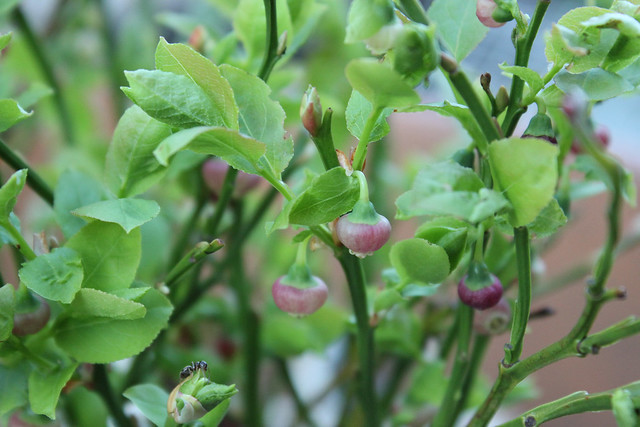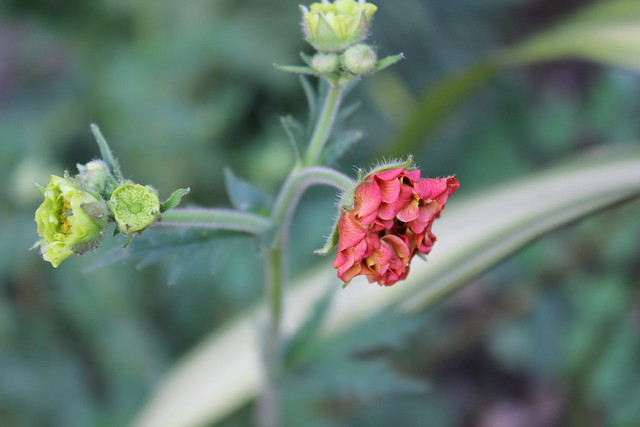High spirits were swiftly restored within a few days by the evening plot pickings. As with most other veg gardeners, I'm currently able to collect beans, beetroot, chard, radishes, raspberries and Cape gooseberries (delicious but few!) most evenings. As this is small space gardening, I don't get trug loads of produce but tiny tastes are definitely better than none.
We've not done too badly this summer; there's usually enough for me and my occasional helper to have a bowlful of beans and raspberries every week at the moment - and plenty of beans and plot courgettes to hand round to a few neighbours. I like to share when I can, there would be no joy in keeping it all in the freezer for myself.
The courgettes that I planted out rather later than recommended are putting out small fruits; I don't mind as I've already had a courgette/marrow overload from my plot neighbour up at the allotments. And I read of a good tip recently - if you cut off the first tiny fruits, the plant is encouraged to pump out lots more larger sized fruit. I've done as suggested so we'll see ... and the tiny courgettes have been sliced and added to a creamy bacon and courgette tagliatelle. (Waitrose recipe here, if you're interested.)
The beetroot has been really successful this year (Baby Bona from Chiltern Seeds). I've been picking plump round beets with a sweet taste - perfect for my morning juice. (Yes! Beetroot in a juice! It's really delicious in a juice with apples, carrot, lemon, broccoli stem, cucumber and yellow pepper. Yummy and energising!)
So far I've restricted myself to picking only the 'french' beans that I'm growing and saving the Borlotti beans to plump up. I'm growing 'Cobra' climbing beans which are aptly named; they're normally pencil straight but, where I've missed a few, they've grown fat and curled round on themselves - more boa constrictor than cobra but the similarity is amusing.
The Borlottis, on the other hand, are perplexing me. I've seen so many pictures of brightly coloured pink and cream pods - surely one of the reasons to grow them! Mine, however, are pale green pods that occasionally mature to sport some magenta streaks. Is this usual? It's definitely not what I was expecting. Will they eventually turn pink? Is there a reason that some pods are streaked and others not? If you know, do tell.
Of course I may not get any mature Borlottis at all if the munching molluscs keep at it. Leaves and pods at the top of the plants have been decimated - the slime trails tell their own story. I mean, really, six feet off the ground - the very cheek of it!
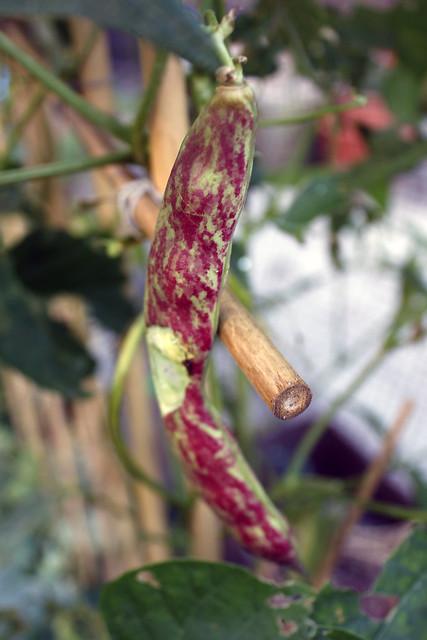 |
| This is one of the tinier munchings - there are pods that are positively naked on the other side. Grrr. |
So all I can say is .... thank goodness for broccoli. (Maybe I should get some fleece over that.)



